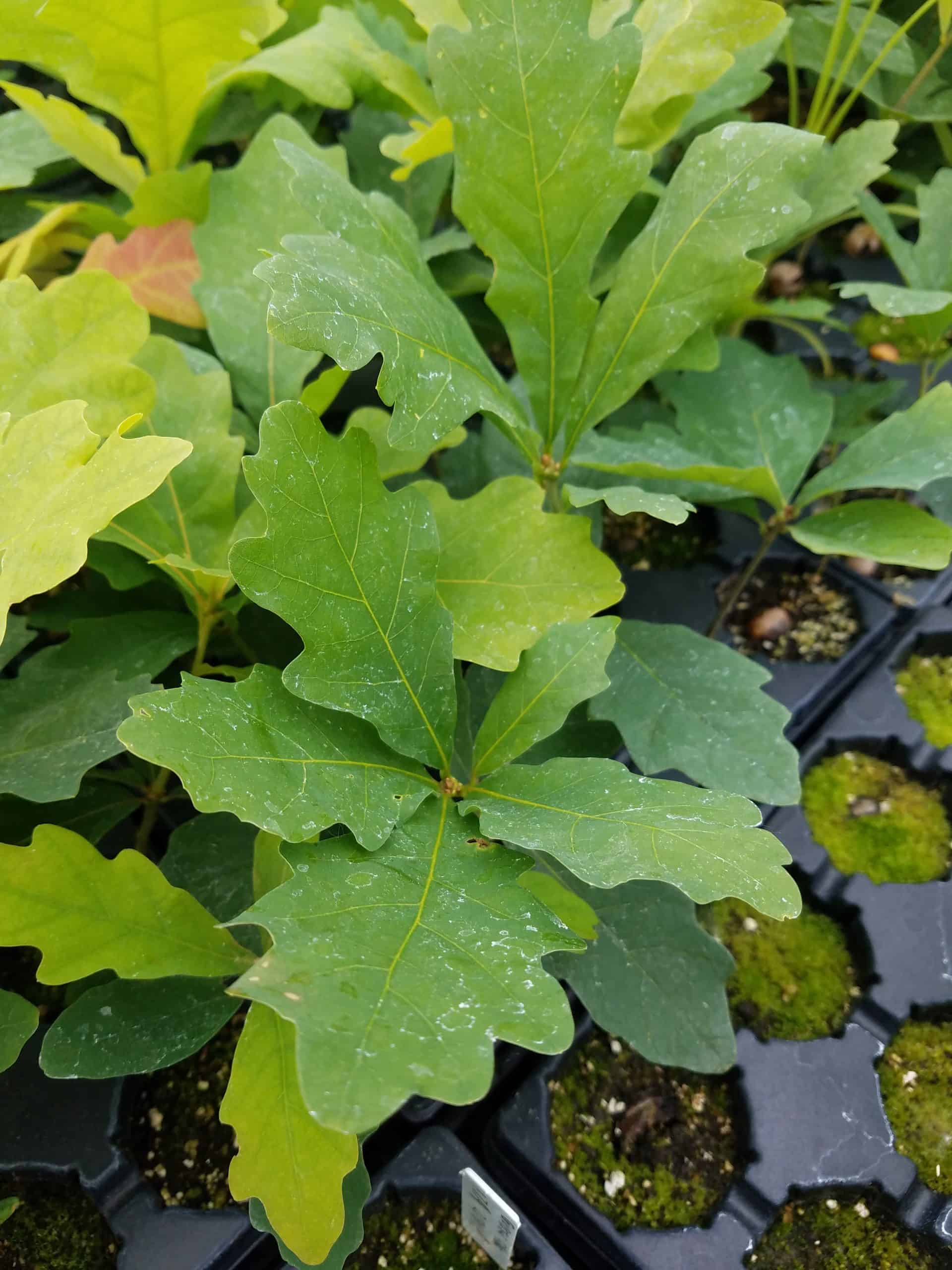Quercus alba
White Oak






General
A tall oak tree that can grow over 100 feet tall. Tolerates many growing conditions. Acorns are a food source for birds and mammals. White Oak acorns can be consumed by humans with preparation.
Plant Description
Bark is medium grey, and often cracked in old trees. Leaves are pinnately lobed, with smooth edges, and are often fairly large.
Height (ft)
100+
Spread (ft)
100
Soil moisture
Low to Medium
Soil types
Medium to Coarse
Wetland indicator
FACU
Shade tolerance
Shade Tolerant/Full Sun to Part Shade
Bloom color
Yellow
Bloom period
Spring
Fall conspicuous
Yes
Anaerobic tolerance
None
Drought tolerance
Medium
Salinity tolerance
Medium
Self-Pollinating?
Yes
Range
White oak is native and common to every state East of the Mississippi River, is found in all states bordering the Mississippi river, and is also native but not common in South Dakota, Nebraska, Kansas, Oklahoma, and Texas. It is common in every New England state.

Kartesz, J.T. 2024. Floristic Synthesis of North America, Version 1.0. Biota of North America Program (BONAP) [website http://bonap.org/]
Additional Information
According to BRIT - Native American Ethnobotany Database, an infusion of the bark has been used to treat chapped skin and the bark has been used for indigestion. An infusion of the bark has been used for asthma. The Cherokee have used the branches and twigs to make baskets. The wood has been used to make furniture and for firewood. The acorns have been scorched and ground into a coffee similar to coffee.
